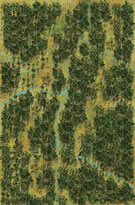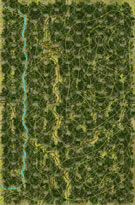|
Counterattack Kokoda Trail #3 |
||
|---|---|---|
| (Attacker) Australia | vs | Japan (Defender) |
| Formations Involved | ||
|---|---|---|
| Australia |  |
39th "Hawthorn-Kew" Infantry Battalion |
| Japan |  |
144th Infantry Regiment |

| Total | |
|---|---|
| Side 1 | 3 |
| Draw | 0 |
| Side 2 | 7 |
| Overall Rating, 10 votes |
|---|
|
3.1
|
| Scenario Rank: 683 of 913 |
| Parent Game | Kokoda Trail |
|---|---|
| Historicity | Historical |
| Date | 1942-08-08 |
| Start Time | 08:00 |
| Turn Count | 20 |
| Visibility | Day |
| Counters | 27 |
| Net Morale | 2 |
| Net Initiative | 3 |
| Maps | 2: 34, 35 |
| Layout Dimensions | 86 x 28 cm 34 x 11 in |
| Play Bounty | 131 |
| AAR Bounty | 153 |
| Total Plays | 10 |
| Total AARs | 4 |
| Battle Types |
|---|
| Airfield Control |
| Ambush |
| Surprise Attack |
| Urban Assault |
| Conditions |
|---|
| Hidden Units |
| Terrain Mods |
| Scenario Requirements & Playability | |
|---|---|
| Afrika Korps | Counters |
| Hammer & Sickle | Counters |
| Kokoda Trail | Base Game |
| Introduction |
|---|
|
After seizing their assigned objective of Kokoda, the Yokoyama Advanced Detachment stopped and sent its engineers back the way they'd come to improve the tracks between the east coast and Kokoda. This would help speed the advance of South Seas Detachment across the Owen Stanley Mountains toward Port Moresby. Meanwhile the Australians holding the trail ahead of them at Deniki started receiving reinforcements from 39th Infantry Battalion (companies straggling up the trail from Port Moresby). But the 39th's new commander, Major Alan Cameron, was not willing to concede the initiative to the Japanese. He resolved to launch a three-pronged counterattack against Kokoda in an effort to recapture the airstrip and bring in further reinforcements and supplies by air. Leaving two companies in reserve at Deniki, he gave each of the other three companies a different assignment in the counterattack. D Company would cut the trail east of Kokoda to block Japanese reinforcements, C Company would assault directly up the track from Deniki and A Company would circle through the jungle for a flanking attack on Kokoda itself. Once A Company had control of the village and airstrip, they were to fire a Verey flare pistol to signal that reinforcements could be brought in by air. |
| Conclusion |
|---|
|
D Company reached its assigned location and set up an ambush that inflicted about 60 casualties on a party of Japanese engineers returning to Kokoda. The Japanese responded by moving a strong force out of Kokoda that forced D Company to go "bush" and separate into small groups to move back to Deniki. That allowed A Company to reach Kokoda undetected and capture the village and airstrip from its few remaining defenders. They fired the Verey signal and dug in to wait for the promised airlift of reinforcements. However, because Australian reconnaissance patrols had failed to locate the main body of the Yokoyama Detachment, Captain A. C. Dean led the untested troops of C Company straight into the main Japanese force. The Australians lacked the numbers to dislodge the Japanese from the trail, and once Captain Dean was killed they moved back into the lines at Deniki. That left A Company unsupported, and when the promised airlift never arrived they were ordered to disperse into the jungle and move back to Deniki in small groups. |
| 1 Errata Item | |
|---|---|
| Scen 3 |
The Australian OB calls for a total of four Sergeants, but there are only three in Afrika Korps. I played the scenario assuming C Company (4 INF) needed only one SGT, and not two. (willdeworde
on 2014 Dec 02)
|
| Oh for Pete's Sake... |
|---|
|
This scenario is "supposed" to give teh Australians a chance to be on the offensive and make the Japanese player feel some of the pain. Strategically they have stolen a march on the Japanese and the situation has given them the chance to inflict a tactical reverse on the Japanese forces. There are some hidden Japanese units and their usual fanatical morale but otherwise the Aussies should get some traction here. On the other hand, if your main strike force gets disrupted and demoralized the second they see an enemy soldier and your secondary force blunders into the main enemy force well you end up with a mess. The Aussies couldn't hold either Kokoda or the airfield and were trundled off into the jungle. A very disappointing result. |
| 0 Comments |
| Holding the Airfield | ||||||||||||
|---|---|---|---|---|---|---|---|---|---|---|---|---|
The longest scenario I've played to date, and another interesting game. Australians are on the attack this time, with an element coming in from the south end and another coming in overland to take the airfield and village of Kokoda. Japanese don't get to do anything until they detect the Australians, either by being able to see them in the jungle or being fired on by them. Playing solo, I didn't try to use hidden setup for the Japanese in the south mapboard, but that didn't seem to matter. The first 7 turns were spent with both elements getting into position. The northern element took the unoccupied airfield on the way to Kokoda, then set up to move in from 3 sides at once, and did the same to a single Japanese occupied village hex on the southwest corner of the southern board. This gave the Japanese the warning and the first shot in both and they did well, demoralizing and disrupting most of one stack in both elements. Surviving stacks of Aussies went to work assaulting with 3-unit stacks, but the defensive assaults from the Japanese took it's toll and the much lower Australian assault values and morale showed from the start. It didn't look good for the troops at the southwest corner, and the troops in Kokoda had managed to walk through 2 of the 3 hexes unchallenged before assaulting the 3rd hex, but the Kokoda assault started unraveling quickly and demoralized troops started fleeing, with Japanese infantry right behind them. The only real damage done to the Japanese was the demoralization of the mortars and their fleeing before they could be rallied. Otherwise, the Japanese just kept on pursuing and assaulting. At the end of 20 turns, with 1 airfield hex still under Australian control and the other still being fought over, and another platoon and sergeant having been pushed out of Kokoda, the win went to the Japanese, with 25 points to 3. The Australians in the south chose the better part of valor and moved away instead of trying to stand and lose more steps of troops, having not succeeded in taking anything. |
||||||||||||
| 0 Comments |
| A foiled Australian attack | ||||||||||||||
|---|---|---|---|---|---|---|---|---|---|---|---|---|---|---|
After a long hiatus, we move on to the third battle of the Kokoda campaign. As I rate scenarios, the ratings will be based on the scenario as a stand alone scenario, not part of the campaign. I’m not sure if early scenarios benefit one side with the intent to gain a point lead, with later scenarios designed to close that gap, so I need to consider each as a stand alone. The Japanese set the obligatory Inf in the west hex of Kokoda and the mortar to the south, while the southern hidden forces were spread between the south village (2 inf), the fork just north of the village (1 inf) and the northern fork as far north as they could set up (3 inf). The Australians came on board cautiously approaching the southern village, and slowly approaching Kokoda while taking control of the airstrip. The forces timed the approach to each village to allow assaults on both on the same turn. The Japanese spotted units on the airstrip, allowing the northern three inf a chance to rush and reinforce Kokoda, and succeeded in arriving in Kokoda just ahead of the Australians. Attempts to shake up the Australians before reaching Kokoda were a failure, and the Australians came in hot. Meanwhile, at the same time two Aussie platoons entered the southern village, and walked into an ambush. The initial combat resulted in an exchange of one step, but things went horribly wrong in the south after that. The one remaining Japanese inf rushed forward to reinforce the damaged Japanese, and there began the long string of Japanese rolls of ones and twos on the assault column, while repeatedly rolling 10+ on morale rolls. While the Aussies couldn’t gain ground, the village remained contested. To the north, in Kokoda, the Aussies managed to move into the village, putting stress under the Japanese. The western hex remained contested through the game, both sides too strong to allow either side to risk first fire. The Australians moved into the southern hex, and moved adjacent to the northern hex until opfire from the Japanese in the north hex caused havoc. On turn 12 the Aussies managed their high water mark, controlling one village hex and both airstrip hexes, while contesting two of the three remaining village hexes. Japanese rolling was abysmal, while Aussie morale rolls were constantly coming up five and below. Despite heavier Australian casualties, it began to look like the Aussies might get anywhere from a minor victory to at worst a minor defeat, with draw the most likely outcome. Then the dice turned… In the south, it became a systematic destruction of the entire southern Australian force. Right down to hunting down the individual officers in the jungle and killing them. The only potentially saving grace in the south was that by the time the killing was done the Japanese troops in the south could not hope to ever even approach the northern board before the end of the scenario. Alas, for the Australians the lack of reinforcements coming from the south had no impact. The Japanese gunned down the Aussies coming from the north, then disrupted the Aussies in South Kokoda before assaulting. Aussies died in numbers, and those that did not die, ran. Only in the western hex were both sides maintaining enough strength to prevent the other from assaulting. Australian fear of losing the west hex allowed the Japanese to send a platoon westward and recapture the airstrip. All was lost by turn 20. The Japanese lost one step and controlled all objectives except the contested western hex of Kokoda. The Australians lost 11 steps (as well as three leaders). Final score, 24 to 1. While I suspect some potential balance issues, I rate this scenario a 3 based on our play. Had the Australians moved to Kokoda quicker the Japanese would have been fighting to recover rather than defend the village. In the south, it’s just tough for the Australians unless they can reveal the Japanese hidden forces. Both sides suffered frustration, particularly when each side was too strong in a hex for either to initiate assault. But each side has sufficient action and decisions on how to employ their limited forces. Campaign score: Japanese 53, Australians 7. |
||||||||||||||
| 0 Comments |
| Too little. Too late. | ||||||||||||
|---|---|---|---|---|---|---|---|---|---|---|---|---|
Since the big "points" are with "Kokoda" and the airfield, the Japanese Commander started moving his troops to that area too late to effectively stave off defeat. (I "fixed" the "hidden troops" conditions by putting hidden markers, along with enough other markers to confuse everyone, double the number of markers for the number of units to be hidden seems to be about right.) |
||||||||||||
| 0 Comments |

 KoTr002
KoTr002 












